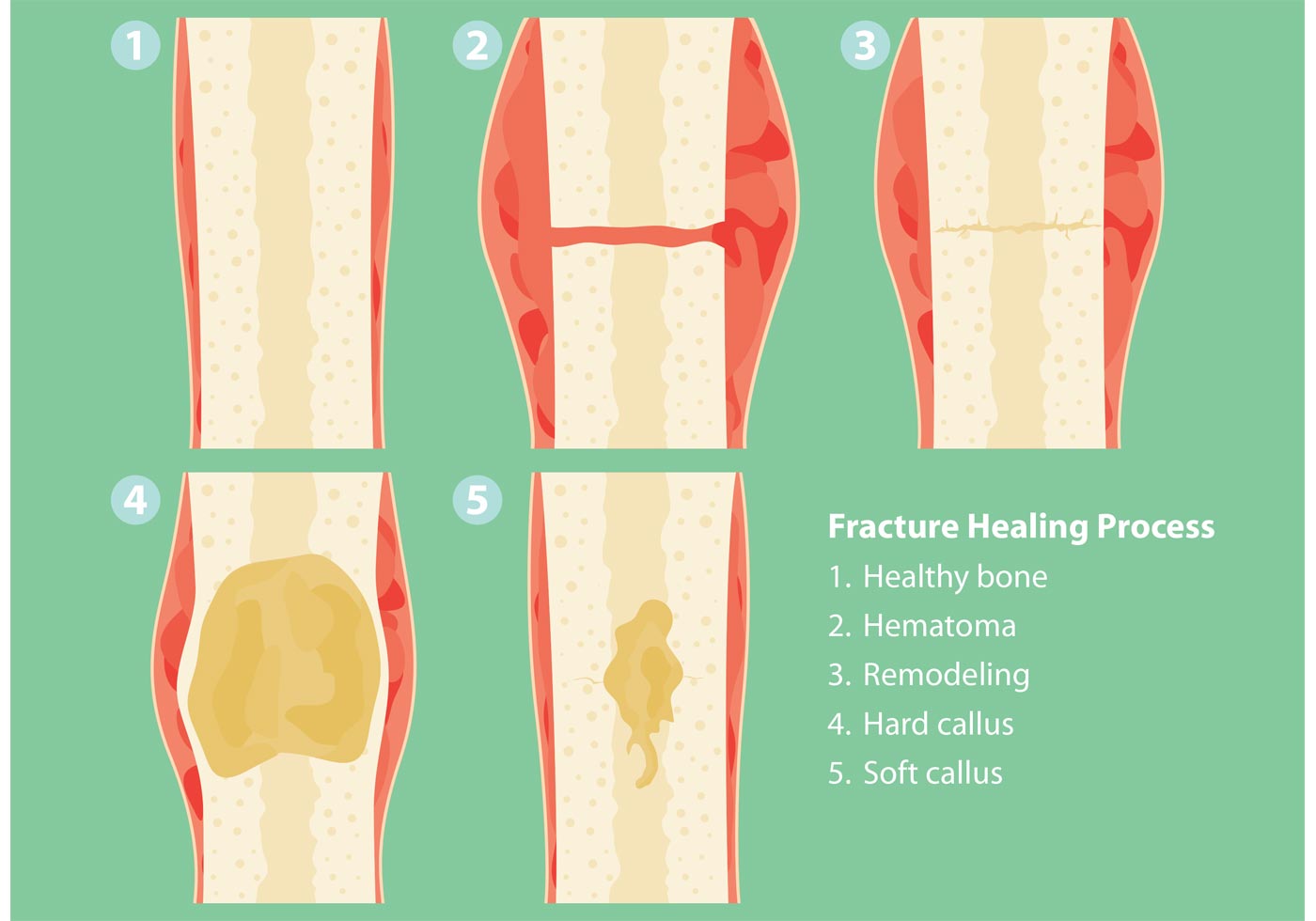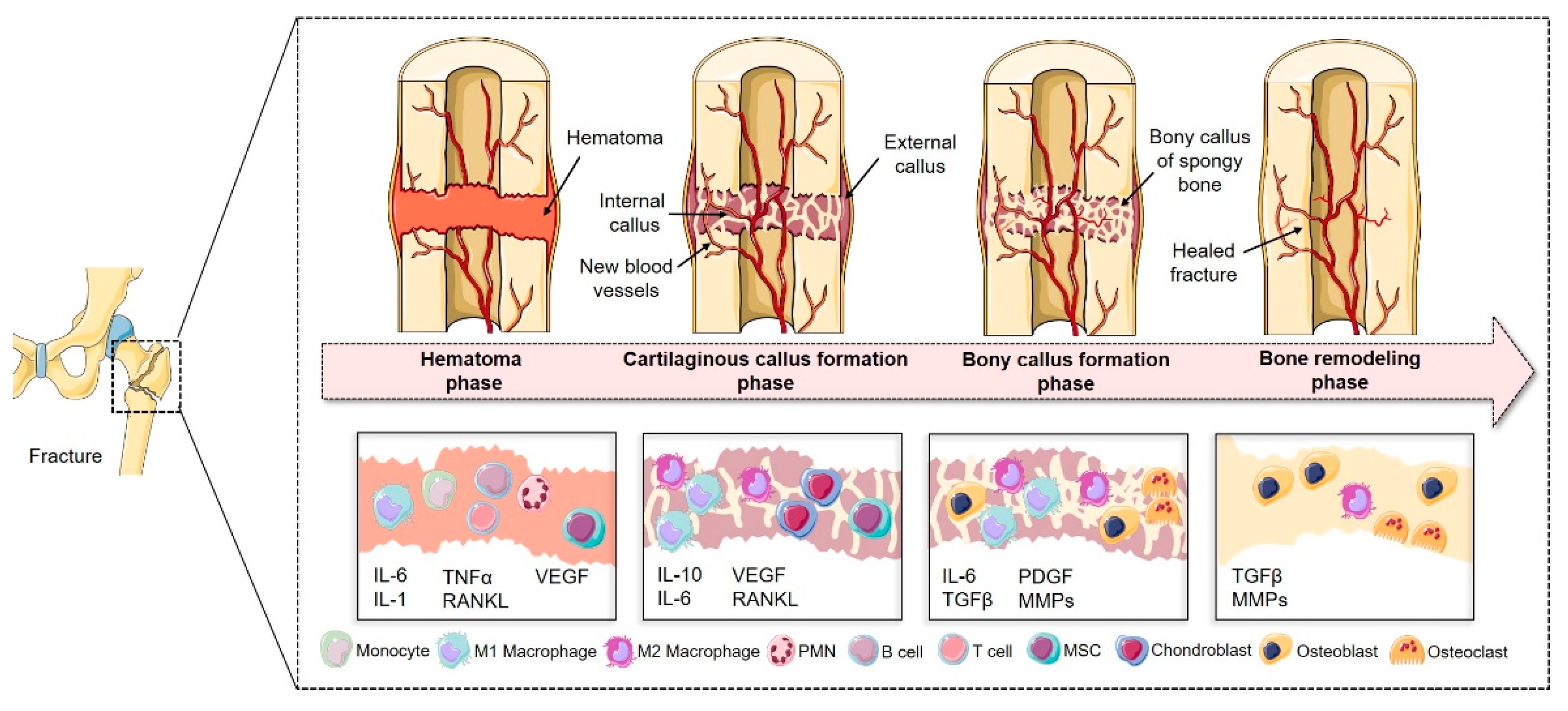“Healing Process of Bone Fractures: Steps and Timeline
Related Articles Healing Process of Bone Fractures: Steps and Timeline
- First Aid For Bone Fractures: Dos And Don’ts
- Nutritional Supplements For Bone Health: What You Need To Know
- Signs And Symptoms Of Bone Density Loss
- Common Types Of Human Bones And Their Functions
- Lifestyle Changes To Improve Bone Density
Introduction
We will be happy to explore interesting topics related to Healing Process of Bone Fractures: Steps and Timeline. Let’s knit interesting information and provide new insights to readers.
Table of Content
Healing Process of Bone Fractures: Steps and Timeline

Bone fractures are a common injury that can occur from a variety of causes, such as trauma, falls, or overuse. When a bone breaks, the body immediately begins the healing process. This process is complex and involves several stages, each with its own set of cellular and molecular events. Understanding the stages of bone healing and the factors that can affect the timeline can help individuals better manage their recovery and optimize their outcomes.
Stages of Bone Healing
Bone healing is a natural process that occurs in four main stages:
-
Hematoma Formation (Inflammatory Phase)
- Timeline: Immediately to several days after the fracture.
- Description: When a bone breaks, blood vessels in the bone and surrounding tissues are disrupted, leading to the formation of a hematoma (a collection of blood) at the fracture site. This hematoma provides a framework for the initial stages of healing.
- Cellular Activity: Inflammatory cells, such as neutrophils and macrophages, migrate to the fracture site to clear away debris and dead tissue. These cells also release growth factors that stimulate the recruitment of other cells involved in bone repair.
- Clinical Signs: Pain, swelling, redness, and warmth around the fracture site.
-
Soft Callus Formation (Reparative Phase)
- Timeline: Days to weeks after the fracture.
- Description: The hematoma is gradually replaced by a soft callus, which is composed of cartilage and fibrous tissue. This callus provides some stability to the fracture site but is not yet strong enough to bear weight.
- Cellular Activity: Chondrocytes (cartilage-producing cells) and fibroblasts (fibrous tissue-producing cells) proliferate and migrate to the fracture site. These cells lay down a matrix of cartilage and collagen, which forms the soft callus.
- Clinical Signs: Decreased pain and swelling, but the fracture site is still tender to the touch.
-
Hard Callus Formation (Reparative Phase)
- Timeline: Weeks to months after the fracture.
- Description: The soft callus is gradually replaced by a hard callus, which is composed of bone tissue. This callus is stronger than the soft callus and can bear some weight.
- Cellular Activity: Osteoblasts (bone-forming cells) differentiate and begin to deposit new bone tissue within the callus. This process is called ossification. The hard callus gradually increases in size and strength until it bridges the fracture gap.
- Clinical Signs: Further decreased pain and swelling, and the fracture site becomes more stable.
-
Bone Remodeling (Remodeling Phase)
- Timeline: Months to years after the fracture.
- Description: The hard callus is gradually remodeled into mature bone tissue. This process involves the removal of excess bone and the reshaping of the bone to its original form.
- Cellular Activity: Osteoclasts (bone-resorbing cells) remove excess bone tissue, while osteoblasts continue to deposit new bone tissue. This process of bone remodeling helps to restore the bone’s strength and shape.
- Clinical Signs: Gradual return of normal bone function and appearance.
Timeline of Bone Healing
The timeline of bone healing can vary depending on several factors, including:
- Age: Children and adolescents tend to heal faster than adults.
- Type of Fracture: Simple fractures heal faster than complex fractures.
- Location of Fracture: Fractures in bones with good blood supply heal faster than fractures in bones with poor blood supply.
- Overall Health: People with good overall health heal faster than people with underlying medical conditions.
- Nutrition: Adequate nutrition is essential for bone healing.
- Smoking: Smoking can delay bone healing.
- Medications: Certain medications can interfere with bone healing.
Here is a general timeline for bone healing:
- Hematoma Formation: 0-7 days
- Soft Callus Formation: 1-3 weeks
- Hard Callus Formation: 2-6 weeks
- Bone Remodeling: 6 weeks to several years
Factors Affecting Bone Healing
Several factors can affect the rate and quality of bone healing. These factors can be broadly categorized as:
- Systemic Factors: These are factors that affect the entire body, such as age, nutrition, and overall health.
- Age: As we age, our bodies become less efficient at repairing themselves. This is because the number of cells involved in bone healing decreases with age, and the activity of these cells also slows down.
- Nutrition: Bone healing requires a variety of nutrients, including calcium, vitamin D, protein, and vitamin C. A deficiency in any of these nutrients can delay bone healing.
- Overall Health: Underlying medical conditions, such as diabetes, osteoporosis, and autoimmune diseases, can impair bone healing.
- Smoking: Smoking impairs blood flow to the fracture site, which can delay bone healing. Smoking also interferes with the activity of osteoblasts, the cells that form new bone tissue.
- Medications: Certain medications, such as corticosteroids and nonsteroidal anti-inflammatory drugs (NSAIDs), can interfere with bone healing.
- Local Factors: These are factors that affect the fracture site directly, such as the type of fracture, the location of the fracture, and the presence of infection.
- Type of Fracture: Simple fractures, such as hairline fractures and transverse fractures, heal faster than complex fractures, such as comminuted fractures and open fractures.
- Location of Fracture: Fractures in bones with good blood supply, such as the femur and tibia, heal faster than fractures in bones with poor blood supply, such as the scaphoid and talus.
- Infection: Infection at the fracture site can delay bone healing and may even lead to nonunion (failure of the fracture to heal).
- Blood Supply: Adequate blood supply is crucial for bone healing. Poor blood supply can delay healing or lead to nonunion.
- Stability: A stable fracture environment promotes healing. Instability can disrupt the healing process.
- Gap Size: Large gaps between bone fragments can hinder healing.
Promoting Bone Healing
There are several things that individuals can do to promote bone healing, including:
- Following the Doctor’s Instructions: It is important to follow the doctor’s instructions carefully, including wearing a cast or brace, taking pain medication, and attending follow-up appointments.
- Resting the Injured Limb: Resting the injured limb is essential for allowing the bone to heal. Avoid activities that put stress on the fracture site.
- Elevating the Injured Limb: Elevating the injured limb can help to reduce swelling and pain.
- Applying Ice to the Injured Limb: Applying ice to the injured limb can also help to reduce swelling and pain.
- Eating a Healthy Diet: Eating a healthy diet that is rich in calcium, vitamin D, protein, and vitamin C is essential for bone healing.
- Avoiding Smoking: Smoking can delay bone healing, so it is important to avoid smoking.
- Physical Therapy: Physical therapy can help to restore strength, range of motion, and function to the injured limb.
- Supplements: Discuss with your doctor about potential supplements that may aid bone healing, such as calcium, vitamin D, and collagen.
Complications of Bone Healing
In some cases, bone healing may not proceed as expected. Complications of bone healing can include:
- Delayed Union: This is when the fracture takes longer to heal than expected.
- Nonunion: This is when the fracture fails to heal.
- Malunion: This is when the fracture heals in a deformed position.
- Infection: Infection at the fracture site can delay bone healing and may even lead to nonunion.
- Avascular Necrosis: This is when the bone tissue dies due to a lack of blood supply.
Conclusion
Bone healing is a complex process that involves several stages. The timeline of bone healing can vary depending on several factors. By understanding the stages of bone healing and the factors that can affect the timeline, individuals can better manage their recovery and optimize their outcomes. It is important to follow the doctor’s instructions carefully, rest the injured limb, eat a healthy diet, and avoid smoking. If you have any concerns about your bone healing, talk to your doctor.








Leave a Reply